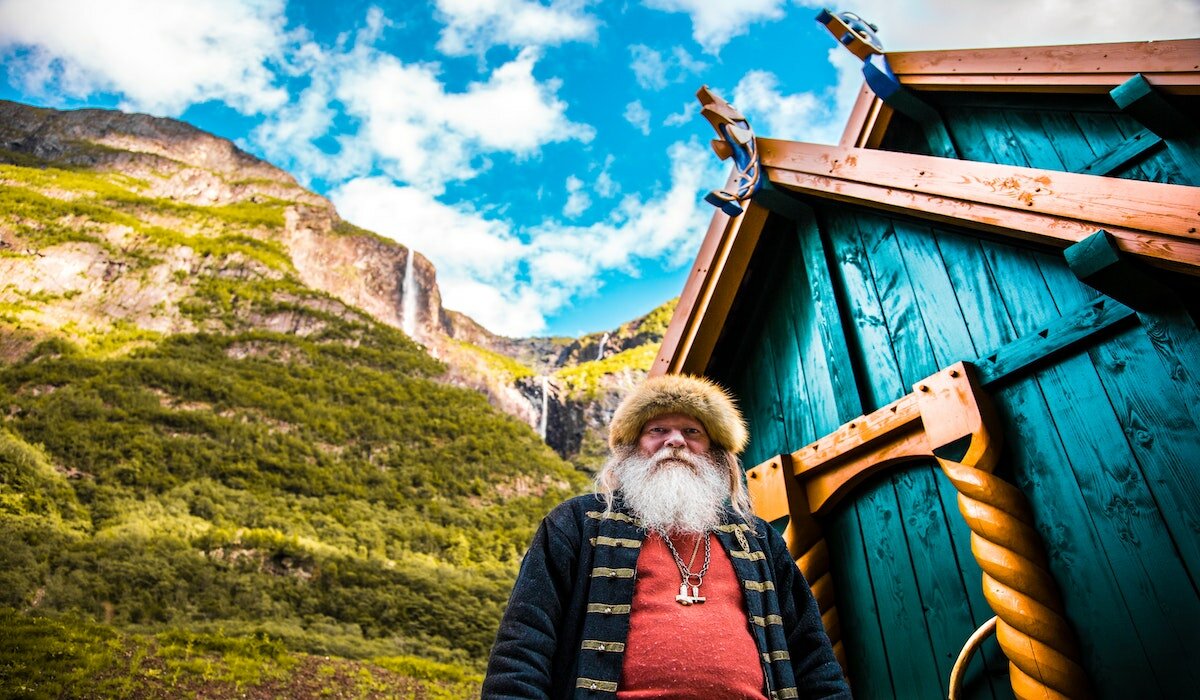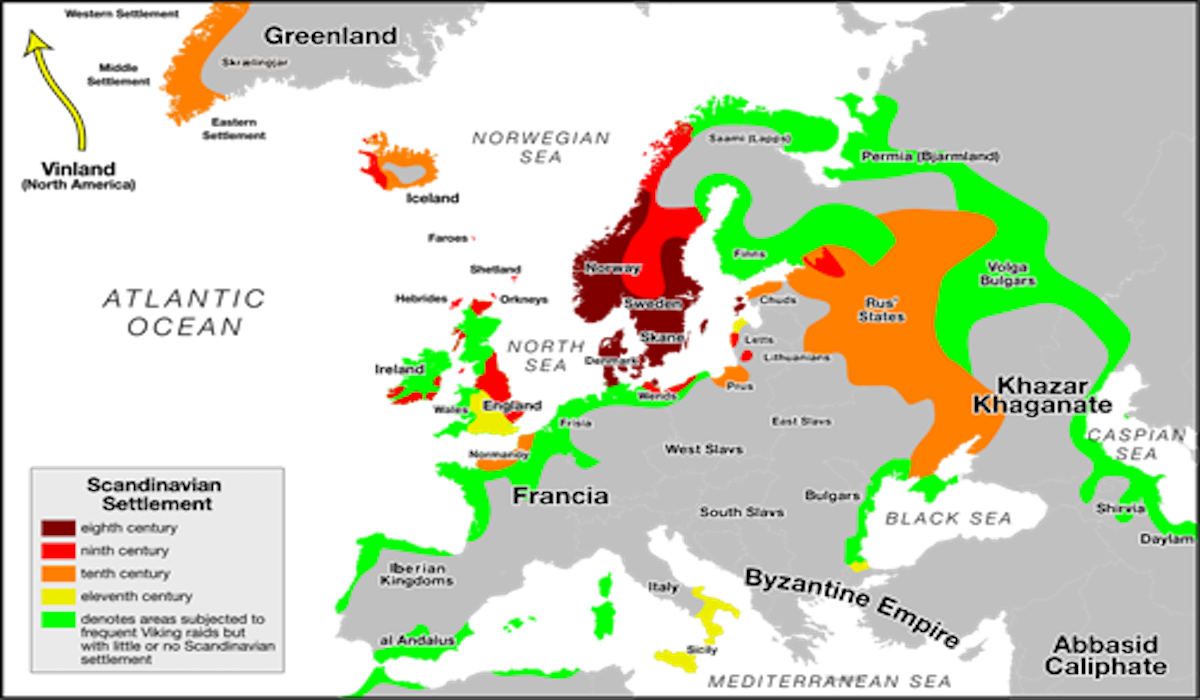Scandinavian stereotypes: Is everyone tall, blonde, and blue-eyed? Rich and happy? Resistant to the cold? We’re demystifying some of the most prevalent stereotypes associated with Scandinavian people.
If you’ve ever asked yourself, “How Scandinavian are you?” this is your chance to find out. But before we case out the clichés associated with Scandinavian people, consider how stereotypes take shape.
What’s in a stereotype?
Stereotypes can be formed from firsthand experience, or they can be developed from hearsay; something you saw online or on TV, or something your friends or family told you.
Stereotypes defined by personal experience might seem more legitimate, but they can be just as shaky as those acquired secondhand.
Maybe you visited Copenhagen and noticed a lot of tall people, perhaps you had a super-blonde tour guide in Tromsø, or you may have noticed a lot of smiling faces in Stockholm (this might ring especially true if you were out during ‘afterwork,’ pronounced ah-veh; the Swedish happy hour).
But, stereotypes can hardly apply across a single district, let alone all three countries that make up Scandinavia. In fact, – it’s likely that even within your city or town, preconceptions exist about certain neighborhoods (think: “that’s where all the rich people live”).
Given the almost-microscopic level stereotypes can condense to, the Norwegians, Swedes, and Danes have stereotypes within their own countries and amongst each other. For example, local jokes sometimes portray Norwegians as hardy, Swedes as haughty, and Danes as hedonistic.

Without further ado, let’s explore the most stereotyped Scandinavian people traits, “typical Scandinavian looks,” and general Scandinavian stereotypes overall.
All Scandinavians are(n’t)…
The happiest people on Earth
If you ask Scandinavian people about their famous status as the world’s happiest, they’ll likely laugh – confirming the hypothesis?
Jokes aside, all Scandinavians probably don’t think of themselves as the happiest people on Earth.
The United Nation’s 2020 World Happiness Report ranked Denmark the 2nd, Norway the 5th, and Sweden the 7th happiest country in the world. Not all agree that the index’s criteria accurately define happiness, however. Six factors are used to create the report: levels of GDP, generosity, social support, life expectancy, freedom, and corruption income.
It’s hard to set any bounds to what happiness means, in large part because it varies, not only on a country level but on an individual level. Hiking makes some people feel pure joy, while for others, reading equates to bliss. Some are happiest among family and friends, while others prefer alone time.
That said, all six factors that make the three Scandinavian countries so “happy” must be indicators of something, and something seemingly positive at that. Whether that phenomenon is happiness, stability, success, or something else – we’ll leave it up to each person to decide for themselves.
Tall, blonde and blue-eyed
Nordic women and Nordic men are often thought to be tall, blonde, and blue-eyed.
But what do Scandinavian people look like in reality?
All hair, eye, and skin colors – and all shapes and sizes – are found in Scandinavia due to a diverse gene pool, which is far from limited to three traits.
Although they’re not a majority, many Scandinavians do, however, have the three stereotypical traits, especially in comparison to the rest of the world.
Denmark’s is the tallest population in the world. The height of Scandinavian women in Denmark is, on average, just over 174 centimeters, and Scandinavian men in Denmark just over 181 centimeters. Norway (where the men average almost 180 centimeters tall, the women almost 167) and Sweden (where the men average over 179 centimeters tall and the women almost 167) are also among the world’s top 20 tallest countries.
Why do Scandinavians tend to rank among the world’s taller people? Science doesn’t exactly know. Among explanations given are diet, the heredity of height, and natural selection.
As for the blue eyes and blonde hair, there are a few theories. However, the most likely is that certain genetic mutations prevailed in the population due to their positive effects on wellbeing given the Scandinavian climate.
In any case, there’s not any one answer that can be given with total certainty.
Shy and reserved
It’s impossible to apply any one characteristic to all Scandinavian people. Traits like shy and reserved, or outgoing and friendly, are prevalent across all populations.
For example, two siblings, or even twins, who have similar genes and grew up in a similar environment can have major differences in personality. One can be characterized as shy and one as outgoing. So naturally, such nuances are rampant across entire countries too.
Nonetheless, some believe that archetypes exist and attribute the shy and reserved traits to Scandinavian people.
A reason non-Scandinavians can believe this is the difference between cultural norms. For example, in Italy, small talk might be considered polite, while in Scandinavia, it can be considered bothersome. So while the cultures differ on the outside, realistically, both can simply be acting according to the standards of politeness prevalent in their own cultural norms.
Descended from the Vikings
With the emergence of TV shows like Vikings, it might be tempting to liken all Scandinavian women to the Viking Lagertha and Scandinavian men to Ragnar Lothbrok.
All romanticizing aside, is every Scandinavian person related to the real-life Vikings?
Many actually could be.
It’s been centuries since the time of the Viking Age. But, given the Vikings’ far-flung travels, widespread migrations, and the even more distant journeys of their descendants, many modern-day humans do have Viking DNA – and it’s not just the Scandinavians.

It’s difficult to determine every single place it exists, as well as the places in which it’s most prevalent, but research is currently underway to reconstruct the gene flow of Viking DNA.
Resistant to the cold
Scandinavian people do, in fact, get cold – they just have extra-evolved protective measures to help them deal with it.
Years of living in Subarctic and Arctic conditions helped shape many anti-cold practices in Scandinavia. These include having great indoor isolation, staying active when outdoors, soaking in the sun whenever possible, eating and drinking warm foods and beverages, and wearing warm clothing specially made for winter conditions.
After all, as the Nordic proverb goes: There’s no such thing as bad weather, only bad clothing.
Extremely rich
Norway, Sweden, and Denmark usually rank high on world lists of the highest GDP per capita. Norway’s energy market and Sweden’s metal market, for example, have contributed to their exceptional standings.
In terms of gross national income per capita, Scandinavian countries are also generally found within the top 20.
Does that mean all Scandinavian people are rich?
It does not. For one, though Scandinavians’ incomes tend to be high across the board, however, so do taxes and costs of living.
The Nordic model, which, to put it concisely, combines capitalism with social welfare, is powered by the countries’ high rates of taxation.
Factors other than taxation also contribute to Scandinavia being expensive to live in. A recent worldwide study for 2020 ranked Norway 2nd, Denmark 5th, and Sweden 23rd in terms of living cost. Criteria used were cost of living, rent, groceries, eating out, and purchasing power.
So what do you really get when you put together high salaries with high taxes and a high cost of living? A large middle-to-upper-middle class. If we take an example of a Scandinavian family, both parents generally have to work to accommodate for taxes and high prices.
Overall, most Scandinavians aren’t super-rich, but many are comfortable.
All about hygge, all the time
Hygge, per the Oxford Dictionary, is “a quality of coziness and comfortable conviviality that engenders a feeling of contentment or well-being.” The phenomenon went viral a few years ago and still continues to conjure up images of a crackling fireplace, big blankets, steaming tea, fuzzy socks, and all things soft and comforting.
The Danish word (its Norwegian equivalent being koselig) does paint a fairly correct picture of how many Scandinavians find comfort and, in particular, deal with each year’s inevitably cold winter.
Hygge can be practiced alone, with a good book and a few candles, or in the company of others, with a feel-good movie and a plate of warm cookies. You can find hygge inside your home (in bed, on a couch, in a reading nook…), or outside of it (inside a cushy café, beside a fire pit, on a blanket on the beach…).
To take it a step further – many Scandinavian people have cozy vacation homes, often cabins, far away from urban crowds, and deep within nature.
Black clothing aficionados
On the streets of Scandinavia’s major cities, you might notice many people indeed wearing black or mostly neutral colors – though not all Nordic men and Nordic women prefer the same color palates, of course.
The popularity of neutral colors could perhaps be attributed to a Scandinavian inclination toward minimalism – just picture the functional and modular furniture of Swedish IKEA.
Are there any Scandinavian stereotypes we can confirm?
There are two, actually.
Norway, Sweden, and Denmark all have amazing cultures…
…and breathtaking nature.
Source: Norway Today
Do you have a news tip for Norway Today? We want to hear it. Get in touch at [email protected]


Leave a comment